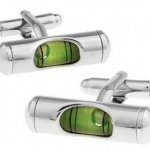(I posted a variant of this in the Talk to a Mechanic subforum with no replies yet, so I thought I'd broaden the audience.)
What is the tolerance for the level of a pool table?
By this I mean a specification along the lines of a maximum deviation from perfectly level, perhaps expressed as being within some number of inches per foot, like .010"/ft., for example. (We know that using more and more sensitive levels we will find that what appears to be perfectly level with a common level is most likely not level when measured with a more sensitive instrument.)
I've searched high and low, and I can't find any specification for this anywhere, except in the Brunswick Gold Crown I 1961 service manual. That book says to use a 28" carpenter's level, and "late should not be out of level more than 0.020." It's a bit ambiguous, in that it could be 0.020" across 28", or maybe 0.020"/ft. But other than that I can find no specification for level.
Thanks very much.
jv
